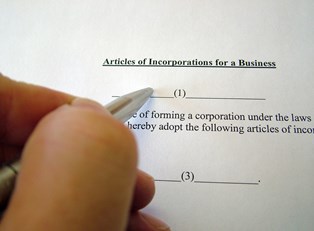An LLC (limited liability company) is a flexible business model made famous in the 1980s. Today, giants such as Amazon, Koch Industries, and Cargill are LLCs. So are thousands of small businesses - and the myths follow in droves. Here, we debunk the top five misconceptions about LLCs.
“An LLC protects personal property from creditors.”
An LLC is not a safe in the cloud where assets and income are protected by the Entrepreneurial Gods. Rather, it does two things well: one, it protects an individual member from another’s negligence; two, it separates the owner’s personal assets from his or her business assets. With that in mind, assets held in an LLC must have a business purpose. Personal funds should not mix with business expenses, and that means separate banking accounts, different PayPal accounts, a second set of tax forms, and Ibuprofen for the headache.
“LLC = DIY.”
The uninitiated often believe that LLCs are quick ‘n’ easy tax shelters requiring no more paperwork than a library card. True, most states only require an operating agreement, called an Articles of Organization, to establish an LLC, but be warned: the rabbit hole runs deep. The Articles of Organization serves as the company constitution that determines profit distributions, management voting rights, capital contribution, partner departures, and more. Multi-member LLC operating agreements may contain bylaws and Subchapter S elections. Get the picture?
“LLC management ties its own shoes.”
State laws leave an LLC’s management structure to the discretion of its members. Single-member LLCs need not worry, but multi-member LLCs have to wade through a slew of questions. Is ownership equal or preferential? Will liquidated assets be distributed by percentage ownership or special allocation? Is management proportional to ownership, and can financial investment be replaced with “sweat equity”?
“An LLC can issue stock.”
Unlike a corporation, which can issue equity to shareholders, a limited liability company does not have tradable stock. A member’s share of ownership is determined by the operating agreement. An LLC can issue membership certificates, which define a member’s percentage ownership, but these certificates swim in murky legal waters. They cannot be transferred, nor are they eligible for dividends.
“An LLC can reduce the tax burden.”
LLCs can be taxed one of three ways. If the LLC has one member, it is taxed as a sole proprietorship. If the LLC has many members, called partners, then it can either be taxed as a partnership or, if preferred, as an “S-election” corporation.
When Bill Clinton was president and suburban homes cost more than the GDP of some small countries, LLCs were all the rage. States exploited the trend by imposing registration fees, renewal fees, publishing fees, and annual report fees. Fees vary, but $100 each is not uncommon. For many sole proprietorships, the tax savings may be offset by imposed fees.
Some states, like Delaware and Nevada, like to export their pro-business statutes to seduce LLC investors. However, an LLC will be taxed under the state where it claims a business presence; not its original creation.




